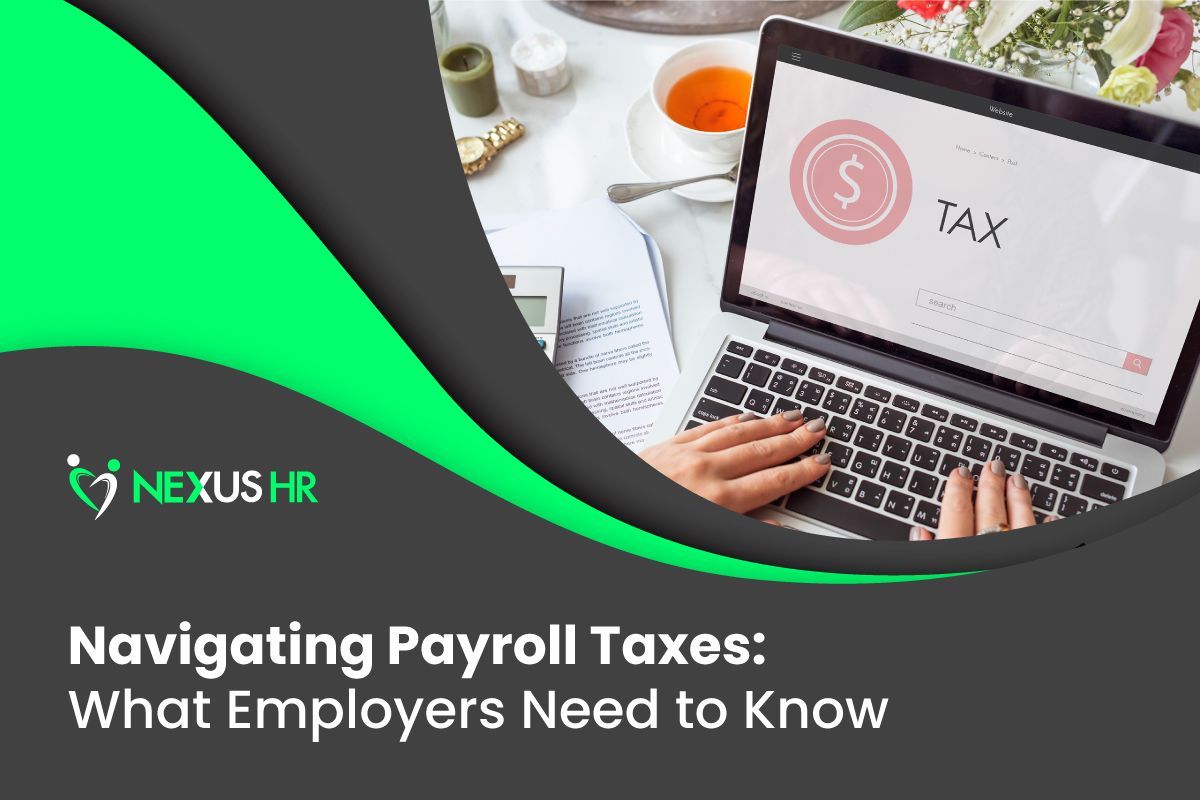Get in touch
877-922-5867
Info@Nexushr.com
877-922-5867
What Is Paternity Leave, And Why You Need To Offer It
The arrival of a new baby is always a momentous occasion for every family. It is life-changing in so many ways, which is why new parents look forward to soaking in the experience, witnessing precious milestones, and supporting each other as they start their new journey as parents.
Unfortunately,
less than 5% of fathers take two or more weeks off work, even though
research
reveals that all men who went on paternity leave viewed it as a positive experience.
Instead of spending the first few weeks of their child’s life at home with the family, most new fathers spend what could have been their paternity leave at work.
What Is Paternity Leave?

Paternity leave is when fathers and partners take time off work to care for and bond with their new child. Typically requested after the child’s birth, adoption, or foster care placement, paternity leave allows employees to actively participate in the early stages of parenting and support the well-being of their child(ren) and partner.
Paternity leave recognizes the importance of involving fathers and partners in caregiving responsibilities, promoting gender equality, and strengthening family bonds.
Read More:
What is DEI in the Workplace?
Why Is Paternity Leave Important?

According to former U.S. Secretary of Labor Tom Perez, fathers taking paternity leave is essential to working families because doing so doesn’t just help their children—it helps the moms, too. By taking turns feeding the baby, changing the diapers, and other routine child-rearing responsibilities, parents can promote a culture of balance and equality in their professional and family lives.
Here are a few more data-backed reasons why paternity leave is important:
- Establishes Father-Child Bond. Taking paternity leave allows fathers and partners to develop a strong emotional connection with their child(ren) starting from infancy. This contributes to healthier family dynamics and stronger relationships. Participants of the McKinsey study attribute the tight father-child bond to their increased presence, more frequent interactions, and a recalibration of priorities brought about by paternity leave.
- Provides Crucial Support to Mothers. Sharing caregiving responsibilities can alleviate stress and fatigue for mothers, facilitating their physical and emotional recovery after childbirth. According to Stanford economists, giving fathers flexibility to take time off work in the months after welcoming a new child improves mothers' postpartum health and mental well-being.
Read More:
How to Support Your Employees' Mental Health
- Promotes Work-Life Balance. A Zippia study shows that 72% of employees consider work-life balance a “very important factor” when choosing a job. Balancing work and family responsibilities is essential for employee well-being. Paternity leave allows fathers and partners to manage their work commitments and participate in meaningful family moments without compromising their careers.
- Helps Fathers Adjust to Their New Roles. The first weeks of parenting a new child are instrumental in establishing a family’s dynamics. Paternity leave gives fathers the time, space, and opportunity to immerse themselves in their new roles as caregivers and active parents. Not only does it support them in building a strong relationship with their child, but 90% of men who took paternity leave also noticed an improvement in their relationship with their partner.
- Promotes Gender Equality. Paternity leave promotes gender equality by recognizing that both parents should have equal opportunities and responsibilities in raising children. It helps break down traditional gender roles and expectations, encouraging fathers to participate in caregiving and household duties actively.
How Does Paternity Leave Work in the U.S. Work Setting?

At the United States federal level, the Family and Medical Leave Act (FMLA) provides eligible employees of covered employers with job-protected leave for family and medical reasons, including childbirth, adoption, or foster care placement. The standard paternity leave is up to 12 weeks.
While the FMLA provides important job protection and leave rights, it does not require employers to provide
paid
leave for paternity purposes. This means that if employees want to avail themselves of the paternity leave benefit, they will go unpaid for the entire duration they’re away from work.
Like maternity leave, the availability and length of your paid paternity leave depend on your employer and state of residence. Unfortunately, only
11 U.S. states have active paid parental leave policies:
- Arkansas
- California
- Connecticut
- District of Columbia
- Massachusetts
- New Hampshire
- New Jersey
- New York
- Rhode Island
- Washington
- Virginia
In
California, qualified expectant fathers can receive benefit payments for up to eight weeks. These are around 60 to 70% of their weekly wages earned five to 18 months before their claim start date.
Read More:
Do You Know Your Employees’ Rights?
Who Is Eligible for Paternity Leave?
Even with federal legislation providing job-protected family leave, 44% of the U.S. workforce still doesn’t have access to it due to ineligibility.
According to the
U.S. Bureau of Labor Statistics, you are eligible to take leave under the FMLA if you meet the following criteria:
- You work for a covered employer, which encompasses:
- Private-sector employers with 50 or more employees in 20 or more workweeks in the current or previous calendar year
- Public agencies
- Local educational agencies
- You have worked 1,250 hours during the 12 months before the start of the leave.
- Your work location has 50 or more employees working within a 75-mile radius.
- You have worked for your employer for 12 months.
If you work for an employer with fewer than 50 full-time employees, federal law exempts them from the obligation to provide paternity leave.
How to Support New Fathers In Your Workforce

Welcoming a new child into one’s family is a huge milestone that involves a significant life change. If you have employees going through this, they’ll need all the support they can get. Here are a few ways you can provide meaningful support to new fathers in your company:
Offer Paid Paternity Leave
While the FMLA provides 56% of the U.S. workforce with up to 12 weeks of unpaid family leave, many new fathers limit their time off work simply because they can’t afford to interrupt their income stream.
The
U.S. Bureau of Labor Statistics states that only a quarter of the U.S. workforce has access to paid family leave.
If you want to make a lasting impact on your employees’ well-being, include paid paternity leave in your company's time-off policy to ensure they have time to bond with their new children and adjust to their new roles without worrying about financial pressures.
Read More:
How to Manage Time-Off Requests Like a (Good) Boss
Offer Flexible Work Arrangements
Depending on your business operations and goals, you can allow new parents to work remotely, on flexible hours, or on a reduced schedule. This helps them balance work and family responsibilities effectively.
According to Thinkific CEO
Greg Smith, one main benefit of having flexible, paid family leave is continuity because it helps employees retain their institutional knowledge and domain expertise while allowing them to find the family structure that works best for them.
Read More:
How to Increase Flexibility for Frontline Workers
Educate Your Team About the Benefits of Paternity Leave
If you want to create a workplace environment that values each employee’s well-being and diverse needs, you must let them know the importance of taking time off work and spending time with their new children.
Design your onboarding process to include discussions on your organization’s paternity leave benefits, as well as its eligibility requirements, usage rights, and real-life positive outcomes.
Read More:
The Ultimate Guide to Onboarding Employees
Encourage by Example
Employees take their cue from leadership. If you want to foster a culture that embraces work-life balance and promotes positive family values, your organization’s leadership team must exhibit it.
When Meta CEO
Mark Zuckerberg went on paternity leaves after his children were born, it helped promote his company’s commitment to work-life balance and generous paid leave benefits. More importantly, Zuckerberg’s public announcement of using his paternity leave helped his employees feel they could do the same and encouraged them to spend time with their families.
Help Your Team Prepare for Paternity Leave
A Project: Time Off study reveals that the top reason employees avoid going on leave is the fear of returning to a staggering amount of work. This doesn’t have to be the case.
As a manager, you can help new fathers in your team prepare for paternity leave long before their scheduled time off. You can work with them to create a transition plan for their ongoing tasks and projects, assist in handing off the assignments to other team members, and ensure everything runs smoothly.
Read More:
5 Key Traits of a Good Manager (According to the People They Manage)
Champion Work-Life Balance in the Workplace with Nexus HR

As a company leader, you play a vital role in supporting your employees through the unique and challenging transition to parenthood.
You can start by working with your human resource (HR) department to establish a fair and achievable parental leave policy. If you don’t have the HR support to get this done,
Nexus HR can help.
With our team of
HR,
payroll, and recruitment specialists, we can help create a comprehensive parental leave policy, implement a streamlined leave application process, communicate this information to your employees, and regularly review the procedures to ensure relevance and effectiveness.
As your trusted HR solutions provider, Nexus HR is ready to help you create a workplace culture that prioritizes the well-being of new parents, building a more engaged, loyal, and productive workforce.











